
2021 Geminid meteor shower and the moon
The Geminid meteor shower – always a favorite among the annual meteor showers – is expected to peak in 2021 on the night of Monday, December 13 into Tuesday, December 14. The Geminids are a reliable shower for those who watch around 2 a.m. local time from a dark-sky location. We also often hear from those who see Geminid meteors in the late evening hours. This year, a waxing gibbous moon will be above the horizon during peak time for viewing. But it’ll set shortly afterwards, leaving the sky dark for watching meteors. Thus the best time to watch for Geminid meteors in 2021 is likely before dawn – say, from around 3 a.m. to dawn – on the morning of December 14.
It’s a somewhat narrow window for meteor-watching. But still worth a look!
And you can also try watching in moonlight. Geminid meteors tend to be bold, white and quick. The brightest ones will overcome the light of the moon. This shower favors Earth’s Northern Hemisphere, but it’s visible from the Southern Hemisphere, too. The curious rock comet called 3200 Phaethon is the Geminids’ parent body.
On a dark night, near the peak of the shower, you can often catch 50 or more meteors per hour. On an optimum night for the Geminids, it’s possible to see 150 meteors per hour. A new moon on December 4 means that the peak of the shower coincides with a moon just a few days past first-quarter phase. On the evening of December 13, the moon will be more than 77-percent lit and already above the horizon as darkness falls. The moon will drift across the sky to the west over the course of the night, among the stars of Pisces, setting around 3 to 4 a.m. local time. This leaves a couple hours of darkness before sunrise of good meteor viewing.
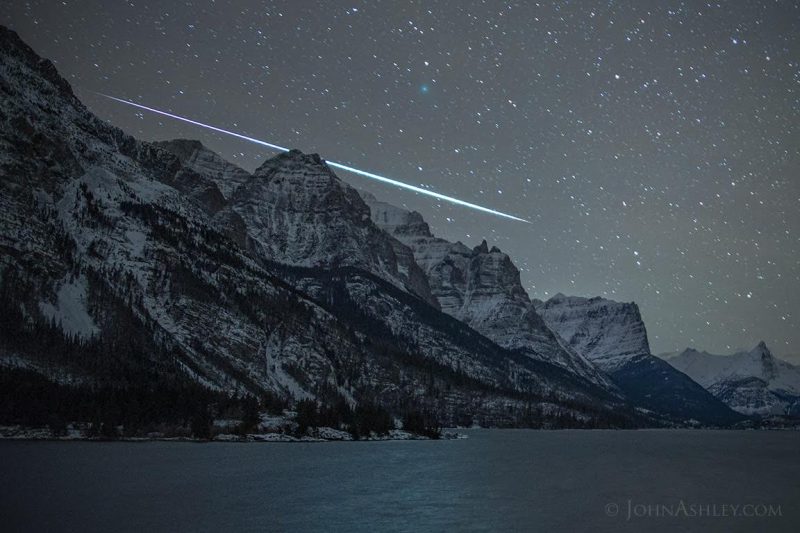
Geminid meteor shower radiant point
The Geminid meteor shower is best around 2 a.m. because its radiant point – the point in our sky from which the meteors seem to radiate – is highest in the sky at that time. As a general rule, the higher the constellation Gemini the Twins climbs into your sky, the more Geminid meteors you’re likely to see.
This Geminids’ radiant point nearly coincides with the bright star Castor in Gemini. That’s a chance alignment, of course, as Castor lies about 52 light-years away, while these meteors burn up in the upper atmosphere some 60 miles (100 km) above Earth’s surface.
Castor is noticeably near another bright star, the golden star Pollux of Gemini. It’s fun to spot them, but you don’t need to find a meteor shower’s radiant point to see these meteors.
The meteors in annual showers appear in all parts of the sky. It’s even possible to have your back to the constellation Gemini and see a Geminid meteor fly by.
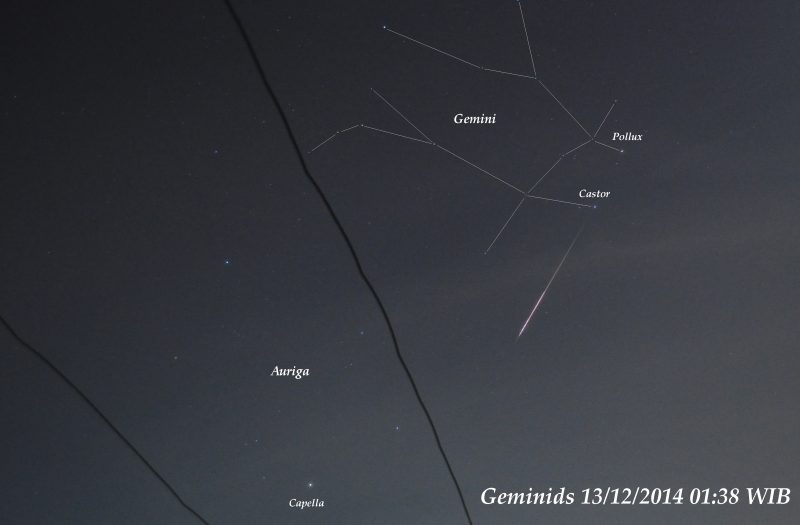
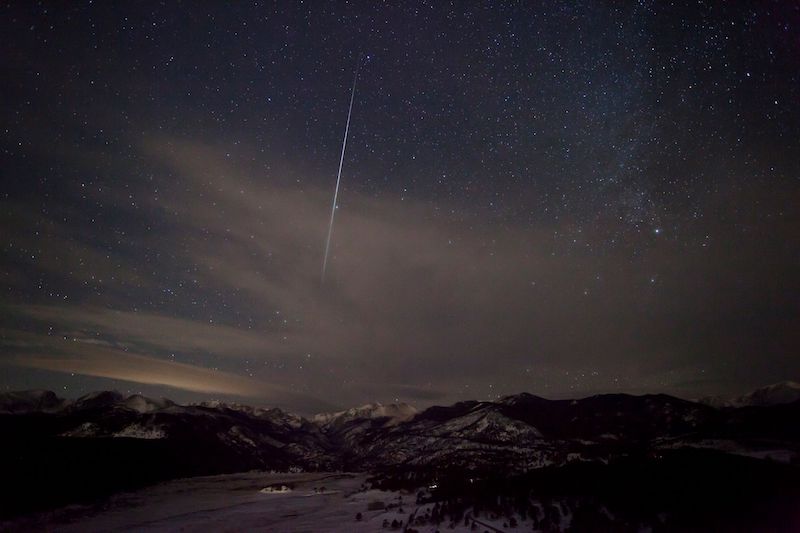
6 tips for meteor watchers
1. The most important thing, if you’re serious about watching meteors, is a dark, open sky.
2. The peak time of night is around 2 a.m. for all parts of the globe. In 2021, the moon is still up at that time. Try watching from around 3 a.m. until dawn.
3. When you’re meteor-watching, it’s good to bring along a buddy. Then two of you can watch in different directions. When someone sees one, call out, “Meteor!” This technique will let you see more meteors than one person watching alone will see.
4. Be sure to give yourself at least an hour (or more) of observing time. It takes about 20 minutes for your eyes to adapt to the dark.
5. Be aware that meteors often come in spurts, interspersed with lulls.
6. Special equipment? None needed. Maybe bring a sleeping bag to keep warm. A thermos with a warm drink, and a snack, is always welcome. Plan to sprawl back in a hammock, lawn chair, pile of hay or blanket on the ground. Lie back in comfort, and look upward. The meteors will appear in all parts of the sky.
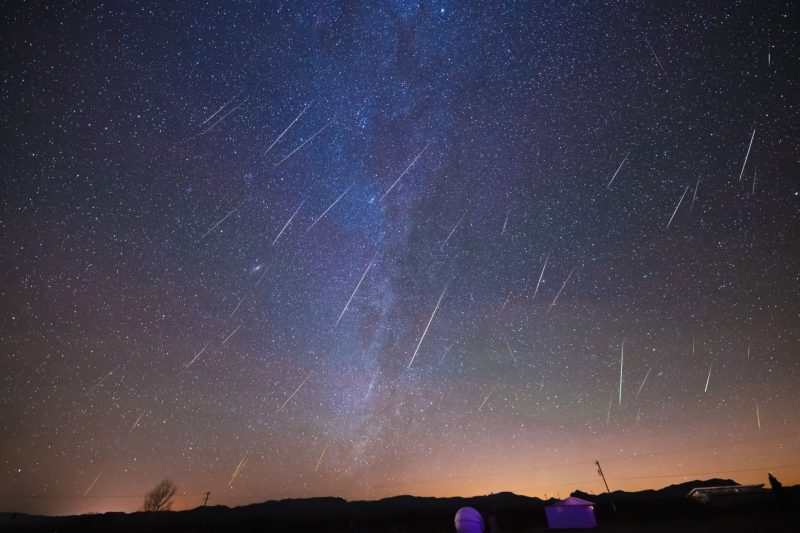
Watch for earthgrazers in the evening hours
If the 2 a.m. observing time isn’t practical for you, and 2021’s waxing moon during the shower’s peak has you discouraged, don’t give up! Sure, you won’t see as many Geminid meteors in early evening, when the constellation Gemini sits close to the eastern horizon and – in 2021 – when there’s a bright moon in the sky. But you might still take a look because the evening hours are the best time to try to catch an earthgrazer.
An earthgrazer is a slooow-moving, looong-lasting meteor that travels horizontally across the sky. Earthgrazers are rarely seen but prove to be especially memorable, if you should be lucky enough to catch one.
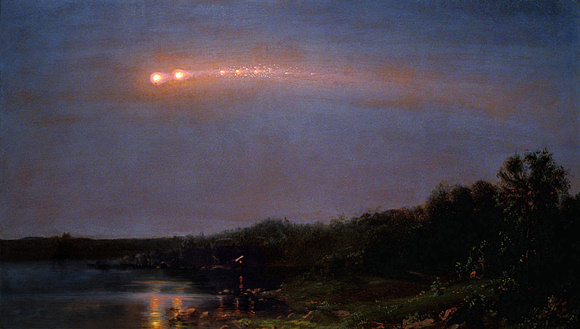
Parent of the Geminid meteor shower, 3200 Phaethon
3200 Phaethon is a rock comet. Scientists believe sodium fizzing from the asteroid’s surface causes it to act like a comet. The debris shed by 3200 Phaethon crashes into Earth’s upper atmosphere at some 80,000 miles (130,000 km) per hour, to vaporize as colorful Geminid meteors.
In periods of 1.43 years, this small 3-mile (5-km) wide asteroid-type object swings extremely close to the sun (to within one-third of Mercury’s distance), at which point intense thermal fracturing causes it to shed yet more rubble into its orbital stream.
There was big excitement about 3200 Phaethon in 2017, because this object was exceedingly nearby around the nights of the Geminid meteor shower’s peak. It swept to within 6.4 million miles (10.3 million km, 26 lunar-distances) on December 16, 2017. Visit The Sky Live to know 3200 Phaethon’s present distance from the Earth and sun.
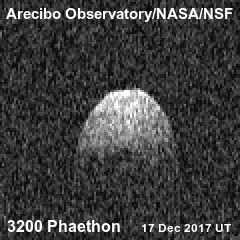
Bottom line: The 2021 Geminid meteor shower peaks December 13-14. There’s a bright moon up most of the night. Predawn December 14 is probably best for observing these meteors this year.
Planet-observing is easy: Top tips here
EarthSky’s monthly planet guide: Visible planets and more
The post Geminid meteor shower 2021 peaks December 13-14 first appeared on EarthSky.
from EarthSky https://ift.tt/3lOz874

2021 Geminid meteor shower and the moon
The Geminid meteor shower – always a favorite among the annual meteor showers – is expected to peak in 2021 on the night of Monday, December 13 into Tuesday, December 14. The Geminids are a reliable shower for those who watch around 2 a.m. local time from a dark-sky location. We also often hear from those who see Geminid meteors in the late evening hours. This year, a waxing gibbous moon will be above the horizon during peak time for viewing. But it’ll set shortly afterwards, leaving the sky dark for watching meteors. Thus the best time to watch for Geminid meteors in 2021 is likely before dawn – say, from around 3 a.m. to dawn – on the morning of December 14.
It’s a somewhat narrow window for meteor-watching. But still worth a look!
And you can also try watching in moonlight. Geminid meteors tend to be bold, white and quick. The brightest ones will overcome the light of the moon. This shower favors Earth’s Northern Hemisphere, but it’s visible from the Southern Hemisphere, too. The curious rock comet called 3200 Phaethon is the Geminids’ parent body.
On a dark night, near the peak of the shower, you can often catch 50 or more meteors per hour. On an optimum night for the Geminids, it’s possible to see 150 meteors per hour. A new moon on December 4 means that the peak of the shower coincides with a moon just a few days past first-quarter phase. On the evening of December 13, the moon will be more than 77-percent lit and already above the horizon as darkness falls. The moon will drift across the sky to the west over the course of the night, among the stars of Pisces, setting around 3 to 4 a.m. local time. This leaves a couple hours of darkness before sunrise of good meteor viewing.

Geminid meteor shower radiant point
The Geminid meteor shower is best around 2 a.m. because its radiant point – the point in our sky from which the meteors seem to radiate – is highest in the sky at that time. As a general rule, the higher the constellation Gemini the Twins climbs into your sky, the more Geminid meteors you’re likely to see.
This Geminids’ radiant point nearly coincides with the bright star Castor in Gemini. That’s a chance alignment, of course, as Castor lies about 52 light-years away, while these meteors burn up in the upper atmosphere some 60 miles (100 km) above Earth’s surface.
Castor is noticeably near another bright star, the golden star Pollux of Gemini. It’s fun to spot them, but you don’t need to find a meteor shower’s radiant point to see these meteors.
The meteors in annual showers appear in all parts of the sky. It’s even possible to have your back to the constellation Gemini and see a Geminid meteor fly by.


6 tips for meteor watchers
1. The most important thing, if you’re serious about watching meteors, is a dark, open sky.
2. The peak time of night is around 2 a.m. for all parts of the globe. In 2021, the moon is still up at that time. Try watching from around 3 a.m. until dawn.
3. When you’re meteor-watching, it’s good to bring along a buddy. Then two of you can watch in different directions. When someone sees one, call out, “Meteor!” This technique will let you see more meteors than one person watching alone will see.
4. Be sure to give yourself at least an hour (or more) of observing time. It takes about 20 minutes for your eyes to adapt to the dark.
5. Be aware that meteors often come in spurts, interspersed with lulls.
6. Special equipment? None needed. Maybe bring a sleeping bag to keep warm. A thermos with a warm drink, and a snack, is always welcome. Plan to sprawl back in a hammock, lawn chair, pile of hay or blanket on the ground. Lie back in comfort, and look upward. The meteors will appear in all parts of the sky.

Watch for earthgrazers in the evening hours
If the 2 a.m. observing time isn’t practical for you, and 2021’s waxing moon during the shower’s peak has you discouraged, don’t give up! Sure, you won’t see as many Geminid meteors in early evening, when the constellation Gemini sits close to the eastern horizon and – in 2021 – when there’s a bright moon in the sky. But you might still take a look because the evening hours are the best time to try to catch an earthgrazer.
An earthgrazer is a slooow-moving, looong-lasting meteor that travels horizontally across the sky. Earthgrazers are rarely seen but prove to be especially memorable, if you should be lucky enough to catch one.

Parent of the Geminid meteor shower, 3200 Phaethon
3200 Phaethon is a rock comet. Scientists believe sodium fizzing from the asteroid’s surface causes it to act like a comet. The debris shed by 3200 Phaethon crashes into Earth’s upper atmosphere at some 80,000 miles (130,000 km) per hour, to vaporize as colorful Geminid meteors.
In periods of 1.43 years, this small 3-mile (5-km) wide asteroid-type object swings extremely close to the sun (to within one-third of Mercury’s distance), at which point intense thermal fracturing causes it to shed yet more rubble into its orbital stream.
There was big excitement about 3200 Phaethon in 2017, because this object was exceedingly nearby around the nights of the Geminid meteor shower’s peak. It swept to within 6.4 million miles (10.3 million km, 26 lunar-distances) on December 16, 2017. Visit The Sky Live to know 3200 Phaethon’s present distance from the Earth and sun.

Bottom line: The 2021 Geminid meteor shower peaks December 13-14. There’s a bright moon up most of the night. Predawn December 14 is probably best for observing these meteors this year.
Planet-observing is easy: Top tips here
EarthSky’s monthly planet guide: Visible planets and more
The post Geminid meteor shower 2021 peaks December 13-14 first appeared on EarthSky.
from EarthSky https://ift.tt/3lOz874

Aucun commentaire:
Enregistrer un commentaire